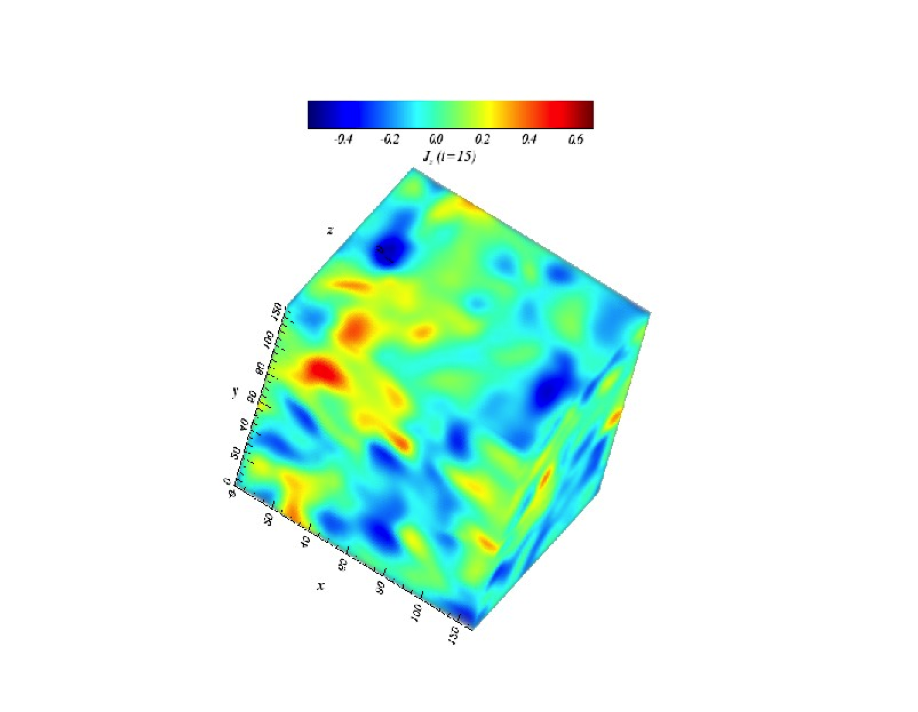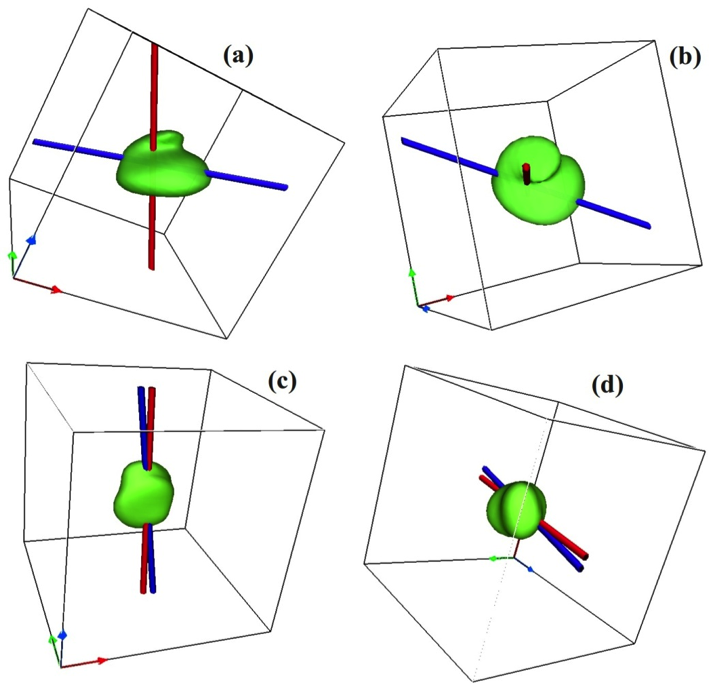Visualisation of 3D-3V simulations of plasma turbulence
Location: CINECA Consorzio Interuniversitario, Bologna, Italy
Project Abstract:
Within the present project, we propose to visualise the results of a study of turbulence and magnetic reconnection in space plasmas to the full dimensional 3D-3V phase space configuration.
Numerical simulations are focused in particular on the analysis of the role of kinetic processes at play in the turbulent cascade in the solar wind, its relationship with explosive magnetic reconnection events and the evolution of the distribution of particle velocities.
Such kind of 3D-3V Vlasov simulations represent the first and unique (to date) attempt to provide a realistic interpretation of experimental measurements in space, using an Eulerian low-noise algorithm. This feature is crucial when analysing the turbulent spectral region at high frequencies where the energy level of the fluctuations is typically very low. Indeed, the artificial inclusion of numerical noise in this region could drastically affect the genuineness of the numerical results.
The analysis of the turbulent cascade at very short lengths (or high frequencies) in the solar wind is a subject of top priority within the scientific community of space plasma physics. In fact, one of the most puzzling aspects of the dynamics of the interplanetary medium consists in the empirical evidence that the solar wind is hotter than expected as an expanding gas: the cooling of the expanding solar wind is less efficient than it should be, then, how does the solar-wind energy turn into heat and keep it hot? Understanding how energy from the Sun can be dissipated into heat in such a collision-free system represents a top priority in space physics. The identification of the physical mechanism that replaces “energy dissipation” in a collisionless magnetized plasma and establishes the link between macroscopic and microscopic scales would open a new scenario of broad importance in the field of turbulence and space plasma heating. Scientists pointed out that the explanation of the empirical evidences mentioned above is related to the turbulent character of the solar wind plasma.
This visualisation project is willing to disseminate the results of such hot topic research.
This project will have 2 students

3D plot of the z component of the current density vector at a fixed instant of time during the development of the turbulence.
Project Mentor: Giuseppa Muscianisi
Site Co-ordinator: Paola Alberigo
Learning Outcomes:
The applicant will have a range of increasing visualization tasks:
- learn how to use ParaView to visualize simple scientific data (3D uniform grids — Valentini code
- optimize visualization and presentation parameters ( color mapping , view parameters, labelling
- learn how to use ParaView or other tools to address more complex visualization cases (non uniform grids, flow fields, AMR — PLUTO code
- build simple animation ( camera keyframes, simulation steps )
- tune movie presentation ( avoid visual discontinuities, jitter, aliasing)
- Simple Web presentation of the project
- Interactive web-based visualization
Student Prerequisites (Compulsory):
- LINUX
- UNIX
Student Prerequisites (Desirable):
- Knowledge in visualization techniques.
- Programming skills: Python , C.
Training Materials:
http://www.paraview.org/
https://wci.llnl.gov/codes/visit/
Project Application Reference: Italy – CINECA – Simulations of Plasma Turbulence
Applications are now closed
